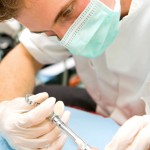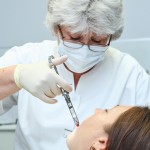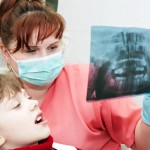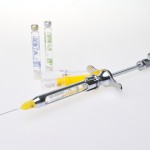
This review ofwhether local computerised anaesthesia decreases the pain and disruptive behaviour in children when compared to conventional anaesthesia included 20 RCTs and suggested no diference between the two approaches.
[read the full story...]
This review ofwhether local computerised anaesthesia decreases the pain and disruptive behaviour in children when compared to conventional anaesthesia included 20 RCTs and suggested no diference between the two approaches.
[read the full story...]
5 systematic reviews were included in this umbrella review of whether articaine or lidocaine is the most appropriate local anaesthetic solution for teeth with irreversible pulpitis undergoing root canal treatment.
[read the full story...]
This review of the most effective anaesthetic solutions for inferior alveolar nerve blocks for mandibular teeth with irreversible pulpitis included 11 RCTs. The findings suggest that mepivacaine with epinephrine performed better than lidocaine with epinephrine but the number of trials is limited and the quality of evidence was very low to moderate.
[read the full story...]
This review of anaesthetic efficiency of articaine for lower third molar extraction included 9 RCTs ( 493 patients -770 lower molars). The findings suggest that 4% articaine with 1:100,000 epinephrine possesses superior anaesthetic efficiency relative to lidocaine.
[read the full story...]
123 RCTs were included in this Cochrane review of local anaesthetic agents for preventing pain during dental treatment. 14 types of local anaesthetic were included evidence to support the use of one over another was limited so further research is needed to clarify the effectiveness and safety of one local anaesthetic over another.
[read the full story...]
This review comparing articaine and lidocaine for local anesthesia use in children only identified 6 low quality studies. Little difference was seen between the two agents.
[read the full story...]
14 RCTs were included in this review of the effect of buffering local anaesthetics in reducing infiltration pain and anaesthesia onset time in dentistry. While slight reductions in onset time was seen in inflamed tissues and for IAN block these were not considered to be clinically significant. However the overall quality of the evidence was low.
[read the full story...]
This review of the use of palatal injections for maxillary extractions included 15 studies. While the findings suggest that they may not be needed further high quality studies are needed to confirm the findings.
[read the full story...]
10 studies involving 746 adult patients were included in this review comparing articaine and lidocaine in patients with symptomatic irreversible pulpitis. Articaine was as effective as lidocaine and provided better supplementary infiltration after mandibular block but no other advantages.
[read the full story...]
The ability to provide pain- free dentistry is important and the American Dental Association Center for Evidence-Based Dentistry (ADA-EBD)has just published this critical summary of a 2011 systematic review by Brandt et al . The review compares the efffecacy of two local anaesthetics ( 4% articaine and 2% lidocaine) in providing successful pulpal anaesthesia. The [read the full story…]